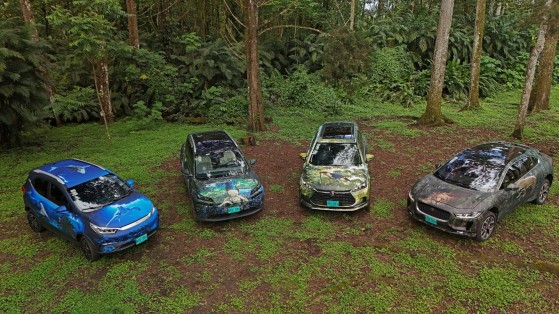The shift towards electric vehicles (EVs) is a crucial step in combating climate change and reducing environmental pollution. While most discussions focus on cleaner air and lower carbon emissions, another significant impact of EV adoption is its role in wildlife conservation and biodiversity protection. By reducing greenhouse gas emissions, minimizing habitat destruction, and limiting noise pollution, EVs contribute to a healthier ecosystem for various species.
1. Reducing Greenhouse Gas Emissions
Traditional gasoline and diesel-powered vehicles are among the largest contributors to carbon emissions, which drive climate change. Rising global temperatures disrupt ecosystems, altering habitats and endangering wildlife species. EVs produce no tailpipe emissions, significantly reducing their carbon footprint and slowing down climate-induced habitat loss.
2. Lowering Air and Water Pollution
Fossil fuel-powered vehicles release pollutants such as nitrogen oxides, sulfur dioxide, and particulate matter into the air, causing smog and acid rain. These pollutants harm both plant and animal life, leading to respiratory diseases and poisoning of water bodies. EVs, especially when charged using renewable energy, eliminate these pollutants, leading to cleaner air and water, which directly benefits wildlife.
3. Limiting Noise Pollution
Many species rely on sound for communication, hunting, and navigation. The constant noise from internal combustion engine (ICE) vehicles disrupts these activities, leading to stress and behavioral changes in animals. EVs operate more quietly than traditional cars, reducing noise pollution and allowing animals to thrive in their natural environments without unnecessary disturbances.
4. Minimizing Habitat Destruction
The extraction and transportation of fossil fuels involve deforestation, mining, and oil spills, which destroy natural habitats and endanger wildlife. By reducing dependency on petroleum, EV adoption can lower the demand for resource extraction, preserving ecosystems and protecting endangered species from habitat loss.
5. Sustainable Battery Production and Recycling
Although battery production for EVs involves mining for materials such as lithium, cobalt, and nickel, advancements in battery recycling and sustainable mining practices are helping to mitigate its environmental impact. Improved recycling methods ensure that fewer raw materials are extracted, reducing habitat destruction and pollution associated with mining.
6. Encouraging Renewable Energy Use
EVs promote the adoption of renewable energy sources like solar and wind power, which have minimal environmental impact compared to fossil fuels. This transition further reduces ecological damage caused by coal mining and oil drilling, indirectly benefiting wildlife conservation efforts.
7. Wildlife-Friendly Urban Planning
As cities transition to electric mobility, infrastructure such as EV charging stations and sustainable urban transport planning can be designed with ecological considerations in mind. Green corridors, wildlife-friendly roadways, and reduced urban sprawl help maintain biodiversity while supporting modern transportation needs.
Conclusion
The widespread adoption of EVs goes beyond reducing carbon footprints—it plays a vital role in preserving wildlife and maintaining biodiversity. By cutting emissions, reducing pollution, and encouraging sustainable practices, EVs contribute to a healthier planet for all living beings. As governments, businesses, and consumers embrace electric mobility, the positive impact on wildlife conservation will only grow, ensuring a more sustainable future for generations to come.
